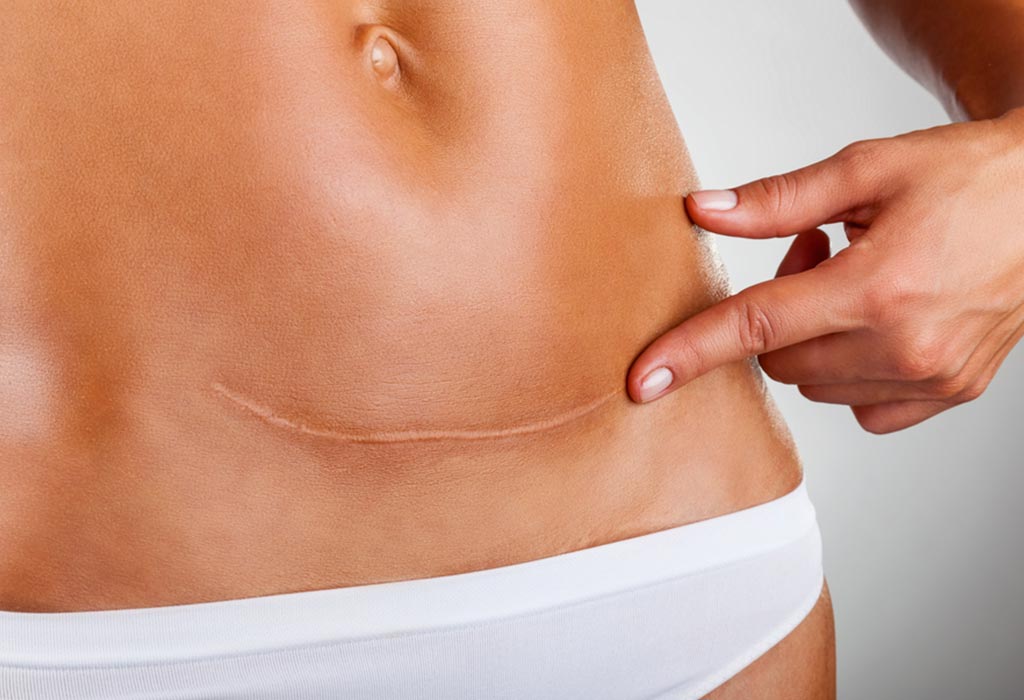The second trimester of pregnancy, which spans from the 13th week to the 27th week, is often referred to as the “honeymoon phase” because many women experience more comfort and fewer pregnancy-related discomfort during this time
Motherhood is a special moment in the life of every woman who will make you change your way of seeing life. From the moment of conception until the moment of birth, your growing baby goes through several stages of development before it is ready to be born. The middle part of your pregnancy is called the second trimester. It consists of weeks 13 or 14 until weeks 26 or 27. The time frame may vary according to your doctor. During this time, your baby continues to grow and change almost daily.
When the second trimester begins, your baby is about 3 inches long. Your doctor may tell you that your baby measures a certain length “from the crown to the buttocks.” This means that they measure your baby from the top of the head to the buttocks (instead of from the head to the toes) because the legs are bent upwards at the height of the baby’s stomach.
At the beginning of the second trimester, your baby’s head is the largest part of the body. During the next few weeks, the rest of your baby’s body will become longer to mate. By the end of the second trimester, your baby can measure 9 inches or even more.
21 Surprising Facts about your Baby’s Second Trimester
When the second trimester begins, your baby is about 3 inches long. Your doctor may tell you that your baby measures a certain length “from the crown to the buttocks.” This means that they measure your baby from the top of the head to the buttocks (instead of from the head to the toes) because the legs are bent upwards at the height of the baby’s stomach.
At the beginning of the second trimester, your baby’s head is the largest part of the body. During the next few weeks, the rest of your baby’s body will become longer to mate. By the end of the second trimester, your baby can measure 9 inches or even more.
Listed below are some surprising facts about your baby’s second trimester
1. Increase in blood volume
One of the changes that happen in the second trimester of pregnancy is that the amount of blood increases by almost 50%. Incredible but true!
Also, hormonal changes will also cause your respiratory rate to accelerate, and a drop in blood pressure occurs. Do not make sudden movements or get up quickly.
2. Nutrition in pregnancy. Eat for two?
Another thing that happens in the 2nd trimester of pregnancy is that many people will tell you that you have to eat for two. Well, the truth is NO. You do not have to eat for two, nor do you have to gain as much weight as you can during your pregnancy. The truth is that you will need an extra caloric intake, that is usually around 300 calories more.
Moreover, remember to take care of your diet in pregnancy, to ensure the necessary vitamins and nutrients.
3. More changes in the mother: brighter skin.
Pregnant women, especially in the 2nd trimester of pregnancy, tend to “shine”. It is normal for people to notice your skin or your hair, so bright and pink. In addition to the excitement of pregnancy, this is also due to hormonal changes which make the sebaceous glands become more active.
4. Increase in shoe size
As your pregnancy progresses, and especially in the second trimester of pregnancy, you are likely to notice your body more bloated. Your legs and also the feet will have to endure, in addition, a greater weight and more pressure, which is normal to swell.
If you have to buy seasonal shoes, do it in the afternoon since that is when the feet are more swollen.
5. Your baby can hear you!
By around 20 weeks, the baby’s hearing is developed enough to hear sounds from the outside world, including your voice. Your baby’s ears are now ready to listen. It is the ideal time to talk to him, to sing and also to put relaxing music that, according to experts, helps them in the connections of his brain.
Your baby will begin to hear certain sounds, such as the beating of his heart, towards the eighteenth week of pregnancy. Your baby’s hearing will continue to improve and he will be able to hear your voice.
6. Baby’s urine
Another thing that happens in the second trimester of pregnancy is that the baby urinates inside the uterus and then drinks it. They say that a baby can urinate up to a liter of urine.
7. Baby’s sex gets confirmed
In some cases, the gender of the baby can be determined through ultrasound during the second trimester. By the middle of your second trimester, the baby’s sex should be clear. If an ultrasound is done, you should be able to know the sex of your baby, if you wish. Keep in mind that your baby should be in an ideal position so that the doctor or technician can see the sexual organs.
8. Changes in baby’s skin
Fine hair and a white waxy substance cover and protect your baby’s skin. The skin is thin, loose and wrinkled. In the third trimester, some fat will begin to grow under the skin.
9. Opening of eyes
Your baby’s eyes can be opened as early as week 20. Prior to this, the eyelids were closed tightly. However, your baby’s eyes can not see anything until the third trimester.
10. Fingerprints
Your baby will have fingerprints on his hands and feet by the end of the second trimester. The baby starts growing fingernails and toenails.
11. Functioning of baby’s digestive system
Your baby’s digestive system will start functioning. The baby will also begin to produce and release urine, which becomes amniotic fluid.
12. Babies also notice the flavors
Although it is strange, it is true that babies are already beginning to notice their first flavors. Keep in mind that you are likely to notice more intense flavors.
13. An increase of the uterus
Did you know that your uterus can grow up to 500 times compared to its original size? In this sense, to give you an idea, in the second trimester of pregnancy, your uterus will go from having the size of a peach to that of a watermelon.
14. Your smell improves a lot
During pregnancy, you will feel how the development of the sense of smell and taste increase considerably. Often, strong odors can trigger nausea and vomiting during pregnancy. These are related to the hormonal changes that occur in your body, especially during the first trimester.
Our recommendation is that you try to avoid those intense smells that may seem unpleasant.
15. You will feel the kick
During the second trimester, there are many changes that occur in your baby. It moves with more force and it is normal that you feel its “kicks”.
Remember your baby’s movements help him prepare for life outside of his body. The muscles get stronger as your baby learns to kick, suck and open and close his hands. Your baby also practices grimacing, such as frowning, smiling, and squinting. All these are normal and expected and there is nothing to worry about this.
16. Breathing Practice
Although the baby doesn’t breathe air yet, they start practicing breathing movements by inhaling and exhaling amniotic fluid.
17. Brain Development During Second Trimester
The baby’s brain goes through significant development, and brain waves can be detected.Neurons multiply and form connections rapidly. Brain waves, signifying early consciousness, emerge around week 20. Various brain regions become more defined, laying the foundation for future cognitive and sensory functions.
The baby’s brain practices coordinated movements, including breathing motions, swallowing, and reflexes, preparing for life outside the womb. This trimester marks a crucial period in the baby’s brain maturation, setting the stage for continued development in the third trimester and beyond.
18. Skin Wrinkles
While the baby’s skin is still thin and translucent, it begins to develop wrinkles, which will smooth out as they continue to gain weight.
19. Ability to Suck and Swallow
By the end of the second trimester, the baby’s sucking and swallowing reflexes are well-developed, preparing them for breastfeeding or bottle feeding.
20. Hair Growth
During the second trimester of pregnancy, the baby’s hair growth is one of the fascinating developments that occur. Here’s more information on this topic:
-
When Does Hair Development Begin? Hair follicles start to form on the baby’s scalp early in the second trimester, typically around the 14th week of pregnancy.
- Lanugo Hair: The initial hair that develops on the baby’s body is called lanugo. Lanugo is a fine, soft, and downy type of hair that covers the entire body, including the scalp. It plays a role in regulating the baby’s body temperature.
- Vernix and Lanugo: As the pregnancy progresses, the lanugo is often covered with a protective, waxy substance called vernix caseosa, which provides additional insulation and protection for the baby’s skin.
- Role of Hair: The lanugo hair and vernix serve important functions in protecting the developing fetus. Lanugo helps to keep the baby warm and can help the vernix stick to the skin, providing a barrier against the amniotic fluid.
-
When Does Lanugo Disappear? The lanugo hair typically begins to disappear during the later stages of pregnancy, around the beginning of the third trimester. By the time of birth, most of the lanugo has typically shed, although some premature babies may still have it at birth.
It’s important to note that the presence and amount of lanugo can vary among babies. Some babies may have more lanugo than others. Lanugo serves a specific purpose in the womb and is not a permanent feature of a baby’s skin. The baby’s permanent hair, which is more related to genetics, typically begins to develop later in pregnancy and after birth.
References:
Stages of Fetal Development – Second Trimester
Second Trimester Fetal Development Milestones













